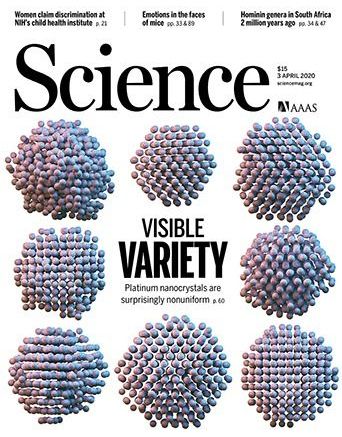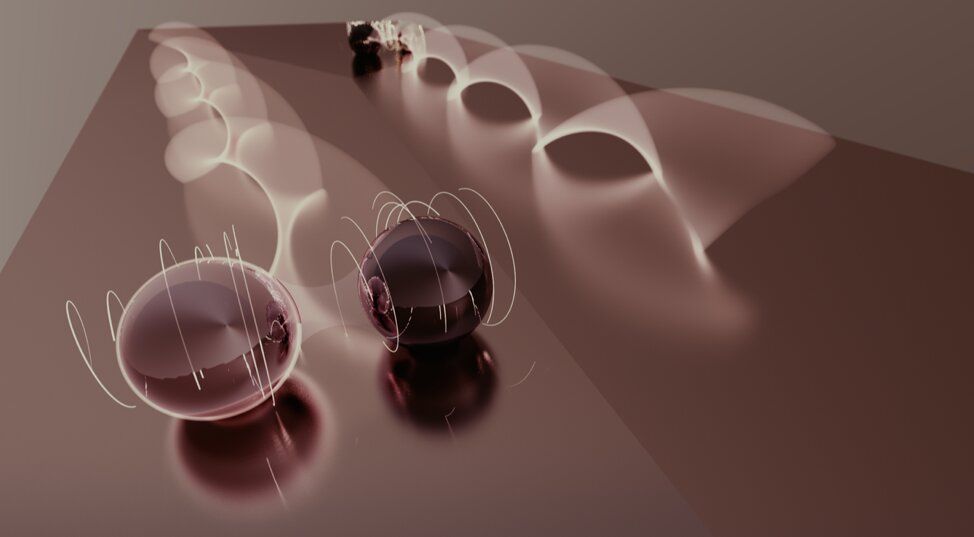
Category: particle physics – Page 558


New “refrigerator” super-cools molecules to nanokelvin temperatures
“Collisional cooling has been the workhorse for cooling atoms,” adds Nobel Prize laureate Wolfgang Ketterle, the John D. Arthur professor of physics at MIT. “I wasn’t convinced that our scheme would work, but since we didn’t know for sure, we had to try it. We know now that it works for cooling sodium lithium molecules. Whether it will work for other classes of molecules remains to be seen.” MIT School of Science, Harvard — MIT Center for Ultracold Atoms, RLE at MIT — Research Laboratory of Electronics at MIT, #research #supercooledatoms #nanokelvin #WolfgangKetterle
Technique may enable molecule-based quantum computing.


Extremely small magnetic nanostructures with invisibility cloak imaged
:00000
In novel concepts of magnetic data storage, it is intended to send small magnetic bits back and forth in a chip structure, store them densely packed and read them out later. The magnetic stray field generates problems when trying to generate particularly tiny bits. Now, researchers at the Max Born Institute (MBI), the Massachusetts Institute of Technology (MIT) and DESY were able to put an “invisibility cloak” over the magnetic structures. In this fashion, the magnetic stray field can be reduced in a fashion allowing for small yet mobile bits. The results were published in Nature Nanotechnology.
For physicists, magnetism is intimately coupled to rotating motion of electrons in atoms. Orbiting around the atomic nucleus as well as around their own axis, electrons generate the magnetic moment of the atom. The magnetic stray field associated with that magnetic moment is the property we know from e.g. a bar magnet we use to fix notes on pinboard. It is also the magnetic stray field that is used to read the information from a magnetic hard disk drive. In today’s hard disks, a single magnetic bit has a size of about 15 × 45 nanometer, about 1,000,000,000,000 of those would fit on a stamp.
One vision for a novel concept to store data magnetically is to send the magnetic bits back and forth in a memory chip via current pulses, in order to store them at a suitable place in the chip and retrieve them later. Here, the magnetic stray field is a bit of a curse, as it prevents that the bits can be made smaller for even denser packing of the information. On the other hand, the magnetic moment underlying the stray field is required to be able to move the structures around.

New laser technique will allow more powerful—and smaller—particle accelerators
Accelerating electrons to such high energies in a laboratory setting, however, is challenging: typically, the more energetic the electrons, the bigger the particle accelerator. For instance, to discover the Higgs boson—the recently observed “God particle,” responsible for mass in the universe—scientists at the CERN laboratory in Switzerland used a particle accelerator nearly 17 miles long.
But what if there was a way to scale down particle accelerators, producing high-energy electrons in a fraction of the distance?

New measurements reveal evidence of elusive particles in a newly-discovered superconductor
Particle chasing—it’s a game that so many physicists play. Sometimes the hunt takes place inside large supercolliders, where spectacular collisions are necessary to find hidden particles and new physics. For physicists studying solids, the game occurs in a much different environment and the sought-after particles don’t come from furious collisions. Instead, particle-like entities, called quasiparticles, emerge from complicated electronic interactions that happen deep within a material. Sometimes the quasiparticles are easy to probe, but others are more difficult to spot, lurking just out of reach.
New measurements show evidence for the presence of exotic Majorana particles on the surface of an unconventional superconductor, Uranium ditelluride. Graphic provided by Dr. E. Edwards, Managing Director of Illinois Quantum Information Science and Technology Center (IQUIST).
Now a team of researchers at the University of Illinois, led by physicist Vidya Madhavan, in collaboration with researchers from the National Institute of Standards and Technology, the University of Maryland, Boston College, and ETH Zurich, have used high-resolution microscopy tools to peer at the inner-workings of an unusual type of superconductor, uranium ditelluride (UTe2). Their measurements reveal strong evidence that this material may be a natural home to an exotic quasiparticle that’s been hiding from physicists for decades. The study is published in the March 26 issue of Nature.



Does relativity lie at the source of quantum exoticism?
Since its beginnings, quantum mechanics hasn’t ceased to amaze us with its peculiarity, so difficult to understand. Why does one particle seem to pass through two slits simultaneously? Why, instead of specific predictions, can we only talk about evolution of probabilities? According to theorists from universities in Warsaw and Oxford, the most important features of the quantum world may result from the special theory of relativity, which until now seemed to have little to do with quantum mechanics.
Since the arrival of quantum mechanics and the theory of relativity, physicists have lost sleep over the incompatibility of these three concepts (three, since there are two theories of relativity: special and general). It has commonly been accepted that it is the description of quantum mechanics that is the more fundamental and that the theory of relativity that will have to be adjusted to it. Dr. Andrzej Dragan from the Faculty of Physics, University of Warsaw (FUW) and Prof. Artur Ekert from the University of Oxford (UO) have just presented their reasoning leading to a different conclusion. In the article “The Quantum Principle of Relativity,” published in the New Journal of Physics, they prove that the features of quantum mechanics determining its uniqueness and its non-intuitive exoticism—accepted, what’s more, on faith (as axioms)—can be explained within the framework of the special theory of relativity. One only has to decide on a certain rather unorthodox step.
Albert Einstein based the special theory of relativity on two postulates. The first is known as the Galilean principle of relativity (which, please note, is a special case of the Copernican principle). This states that physics is the same in every inertial system (i.e., one that is either at rest or in a steady straight line motion). The second postulate, formulated on the result of the famous Michelson-Morley experiment, imposed the requirement of a constant velocity of light in every reference system.